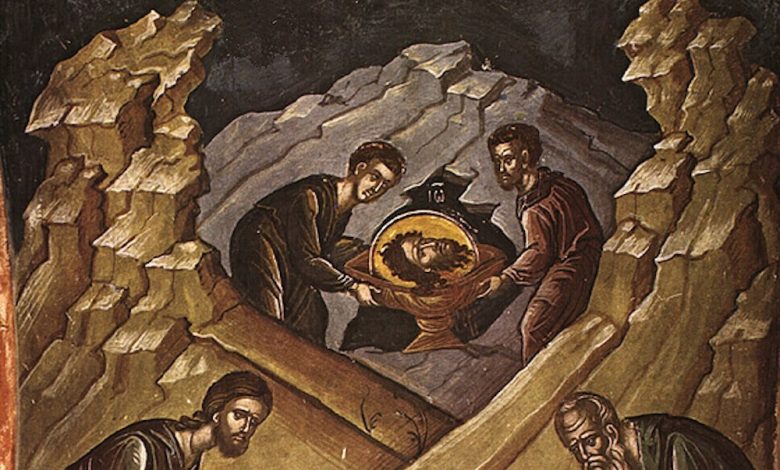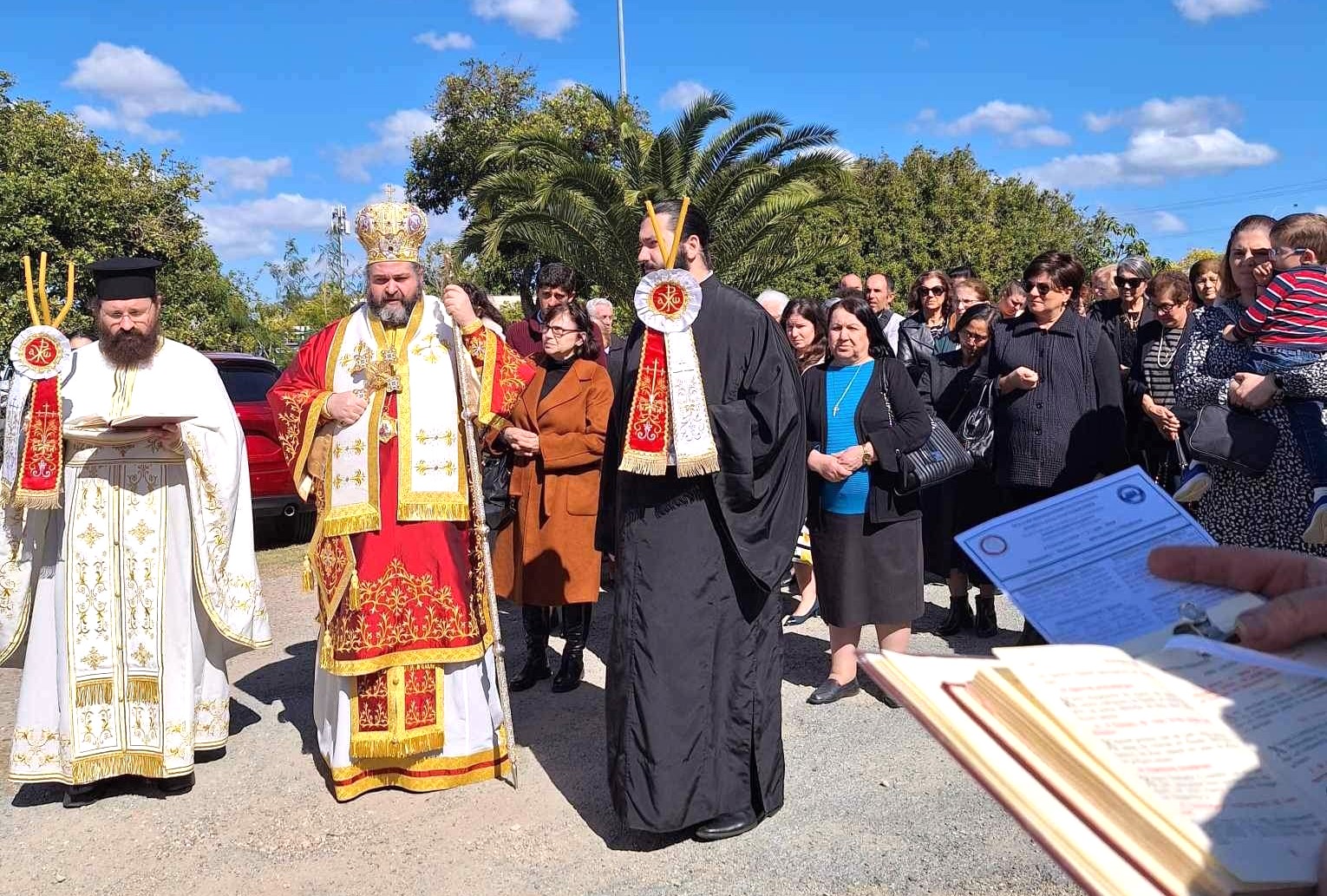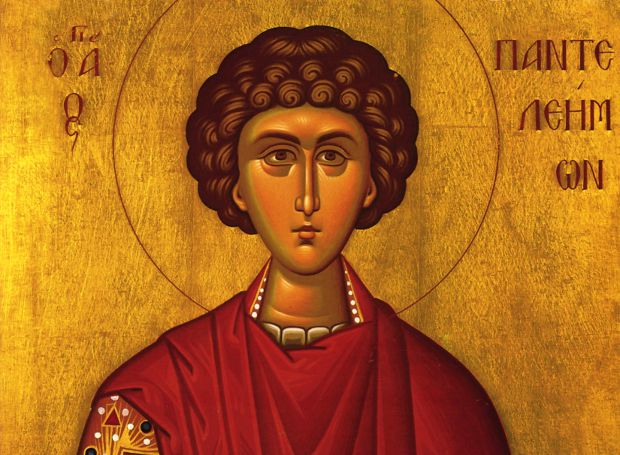First & Second Finding of the Venerable Head of John the Baptist (24 February)


The first finding came to pass during the middle years of the fourth century, through a revelation of the holy Forerunner to two monks, who came to Jerusalem to worship our Saviour’s Tomb. One of them took the venerable head in a clay jar to Emesa in Syria. After his death it went from the hands of one person to another, until it came into the possession of a certain priest-monk named Eustathius, an Arian. Because he ascribed to his own false belief the miracles wrought through the relic of the holy Baptist, he was driven from the cave in which he dwelt, and by dispensation forsook the holy head, which was again made known through a revelation of Saint John, and was found in a water jar, about the year 430, in the days of the Emperor Theodosius the Younger, when Uranius was Bishop of Emesa.
The great and glorious Baptist John was beheaded at the wish and instigation of the wicked Herodias, the wife of Herod. When John was beheaded, Herodias ordered that his head not be buried with his body, for she feared that this awesome prophet would somehow resurrect. Therefore, she took his head and buried it deep in the ground in a secluded and dishonorable place. Her maidservant was Joanna, the wife of Chuza, a courtier of Herod.
The good and devout Joanna could not tolerate that the head of the man of God should remain in this dishonorable place. Secretly she unearthed it, took it to Jerusalem and buried it on the Mount of Olives. Not knowing of this, King Herod became frightened when he learned of Jesus and how He worked great miracles, and said: It is John, whom I beheaded: he is risen from the dead (Mark 6:16). After a considerable period of time, an eminent landowner came to faith in Christ, left his position and the vanity of the world and became a monk, taking the name Innocent.
As a monk, he took up his abode on the Mount of Olives, in the exact place where the head of the Baptist was buried. Wanting to build a cell for himself, he dug deep and discovered an earthen vessel containing a head, which was mysteriously revealed to him to be the head of the Baptist. He reverenced it and reburied it in the same spot. Later, according to God’s providence, this miracle-working head traveled from place to place, then sank into the darkness of forgetfulness and was again rediscovered. Finally, at the time of Patriarch Ignatius, during the reign of the pious Empress Theodora (the mother of Michael and the wife of Theophilus), it was translated to Constantinople. Many miraculous healings occurred from the head of the Forerunner. It is important and interesting to note that, while he was still alive, John did no miracle (John 10:41), but that his relics have been endowed with miraculous power.
Apolytikion of 1st & 2nd Finding of the Head of the Forerunner
Fourth Tone
The Forerunner’s sacred head, having dawned forth from the earth, doth send incorruption’s rays unto the faithful, whereby they find healings of their ills. From on high he gathereth the choirs of the Angels and on earth he summoneth the whole race of mankind, that they with one voice might send up glory to Christ our God.
Kontakion of 1st & 2nd Finding of the Head of the Forerunner
Second Tone
Since we have obtained thy head as a most sacred rose from out of the earth, O Forerunner of grace divine, we receive sure healing in every hour, O Prophet of God the Lord; for again, now as formerly, thou preachest repentance unto all the world.




